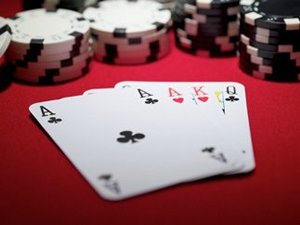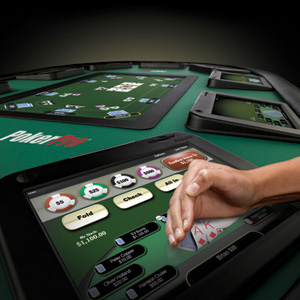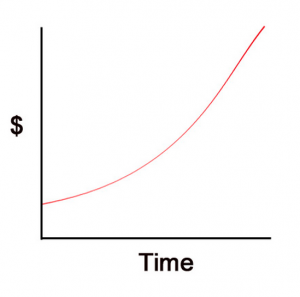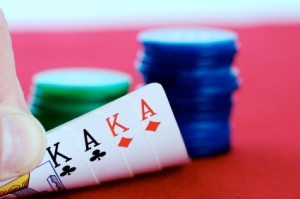The pot-limit Omaha revolution has begun
Toward the end of October, I got a call from Lou White – vice chairman, co-founder, and former CEO of PokerTek, makers of the PokerPro electronic poker table. Lou asked if I was interested in hosting a regular small-stakes pot-limit Omaha game on the PokerPro tables in the poker room at the Excalibur Hotel and Casino in Las Vegas. The deal was that I got to choose the stakes and all of the details of the game, and in return for organizing the game, I had PokerTek’s assurance that the pot-limit Omaha players would be treated as if we were in Bobby’s Room.
In other words, not only did that mean that there would be no resistance to the game, but that we would also have full support.
I agreed. And on Thursday, Nov. 20, we held sort of an official “kickoff” event with two full 50¢-$1 pot-limit Omaha games ($100 minimum/$200 maximum). In total, we had maybe 24 or 25 players show up throughout the evening to play the game that officially marked the new birth of pot-limit Omaha in Las Vegas.
For the occasion, we had a rather eclectic group of players, featuring the likes of Lyle Berman, owner of three World Series of Poker gold bracelets and a member of the Poker Hall of Fame, as well as chairman of PokerTek, World Poker Tour Enterprises, and Lakes Entertainment, among other things; Lyle’s son, Brad Berman, a businessman and a fairly successful poker player in his own right; David Sklansky (needs no introduction); and others.
Doug Dalton, director of poker operations at Bellagio, also made an appearance. And since the event coincided with G2E (the Global Gaming Expo), we also had both Lou White and Chris Halligan (CEO of PokerTek) in attendance.
Why the Electronic Poker Table?
Now, all else being equal, I prefer real chips and real cards over the electronic poker table. That said, the reason the 50¢-$1 game on the electronic poker table is necessary is because:
- The smallest feasible live pot-limit Omaha games being spread these days play bigger than $2-$5 no-limit, and the most commonly spread games ($2-$5 pot-limit Omaha) tend to play bigger than $5-$10 no-limit.
- It is simply not feasible to play straight $1-$2 pot-limit Omaha in a live public cardroom – that is, unless you like raising to $7 or $8 and tracking dollar chips for betting purposes after the flop, or otherwise betting $15 after the flop in red-chip games regardless of whether six or seven people saw the flop, and so on. This is why the “small” $1-$2 blinds game in St. Louis is played as a red-chip game with a $5 bring-in.
- By eliminating all of the betting and dealing issues typically associated with pot-limit Omaha (for example, “How much can I bet?”), the electronic tables can both profitably and feasibly shrink the size of pot-limit Omaha games, thus making it possible to market the game to $1-$2 no-limit players (that is, the mass market).
Effectively Shrinking the Game
The idea behind the 50¢-$1 ($100 minimum/$200 maximum) structure is to have a minimum buy-in that’s big enough at 100 big blinds to eliminate short-stacking – and a maximum buy-in that’s high enough at 200 big blinds to allow for deep-stack play, but low enough that the game doesn’t get out of control – all while playing for stakes small enough that casual players can blow multiple buy-ins without getting their clocks cleaned.
The size of the game is meant to cater directly to $1-$2 no-limit hold’em players – and to an extent, $2-$5 no-limit players – who otherwise have no pot-limit Omaha game to play.
When I first made the move to Las Vegas this past August, a few Las Vegas locals and I tried to establish a regular $5-$5 pot-limit Omaha game at Wynn Las Vegas. The game went several days a week for a few weeks in August before dying out. It came back as a $5-$10 pot-limit Omaha game with a new player pool for a few days in September, but that didn’t last long, either.
The problem with the game at Wynn Las Vegas wasn’t that there weren’t people interested in playing it, but that the people interested in playing the game couldn’t afford to play $5-$5 pot-limit Omaha uncapped (much less $5-$10). Moreover, the people here in Las Vegas who can afford to play $5-$5 pot-limit Omaha uncapped were (and are) for the most part playing elsewhere, such as at The Venetian and Bellagio.
My view – and this goes back to when I first set out to write my first book, Pot-Limit Omaha Poker: The Big Play Strategy – is that pot-limit Omaha is a game that everybody would play if (a) they knew how, and (b) they could afford to play it without losing their shirts.
That said, the reason pot-limit Omaha has been slow to catch on hasn’t been for a lack of interest, but because the games that have been spread thus far haven’t been sustainable. And the reason these games haven’t been sustainable is that the players interested in the game go broke too fast. And there are two reasons these players go broke too fast, the first being that up to this point, most players haven’t had a clue, and the other being that most players wind up playing in games they can’t afford to play because they don’t realize how much bigger pot-limit Omaha plays than hold’em.
Sparking the Future
The bottom line is that in order for pot-limit Omaha to actually be the “game of the future,” we need to:
- Grow the player pool
- Slow the rate of attrition
And my belief is that educating players about how to play the game and shrinking the size of the games themselves will go a long way toward achieving both of those objectives, ultimately growing the game.
This article was originally written by Jeff Hwang. Jeff Hwang is a semiprofessional player and author of Pot-Limit Omaha Poker: The Big Play Strategy. His latest book is Advanced Pot Limit Omaha Vol.1 and will be releasing Vol 2.
Submit your review | |






